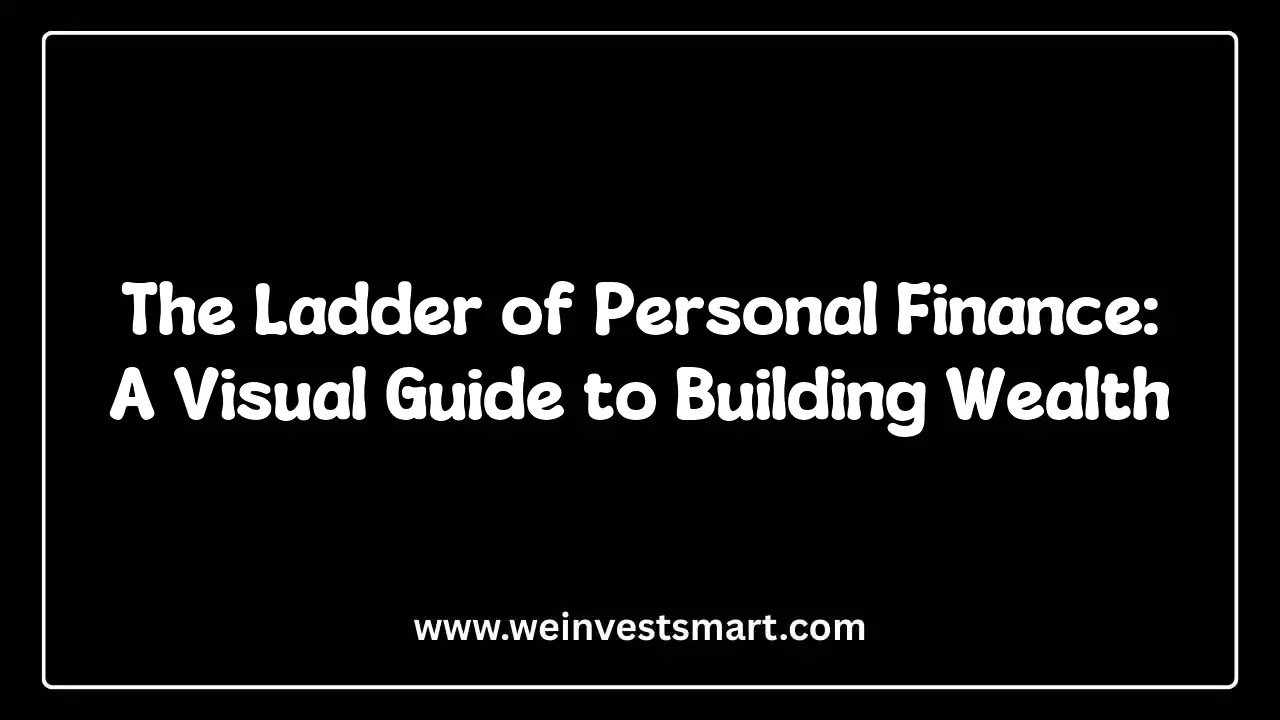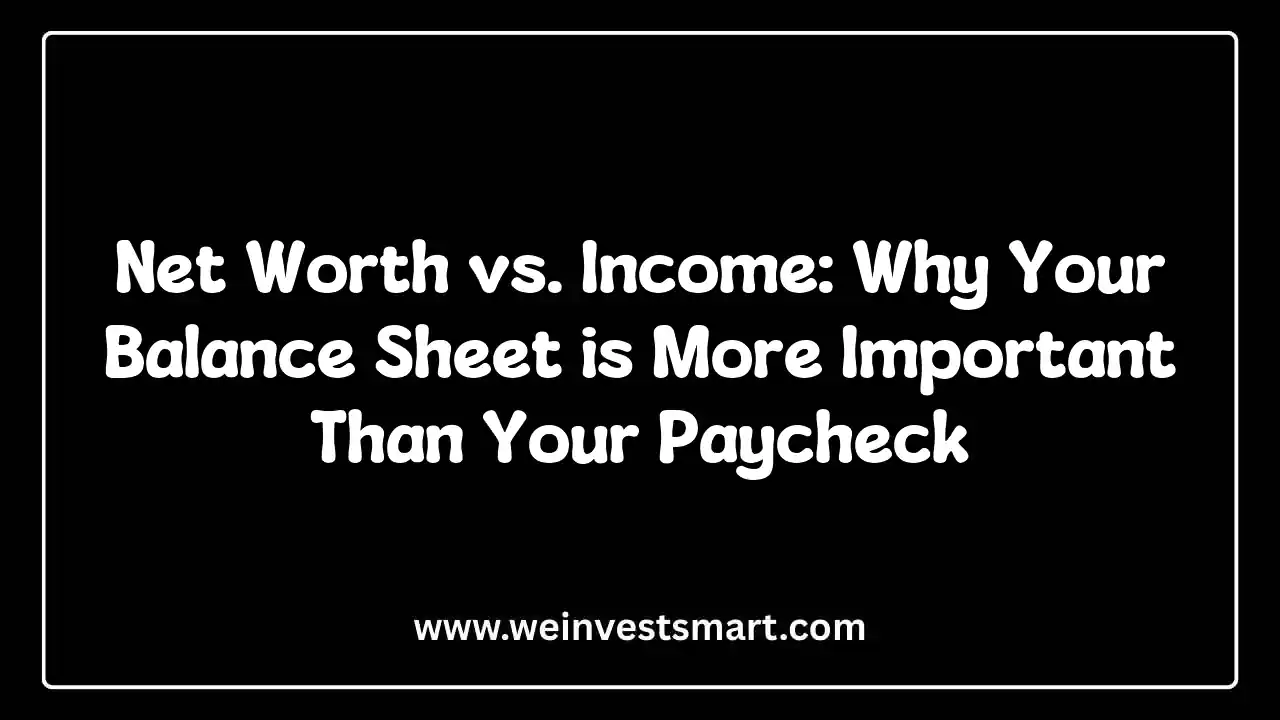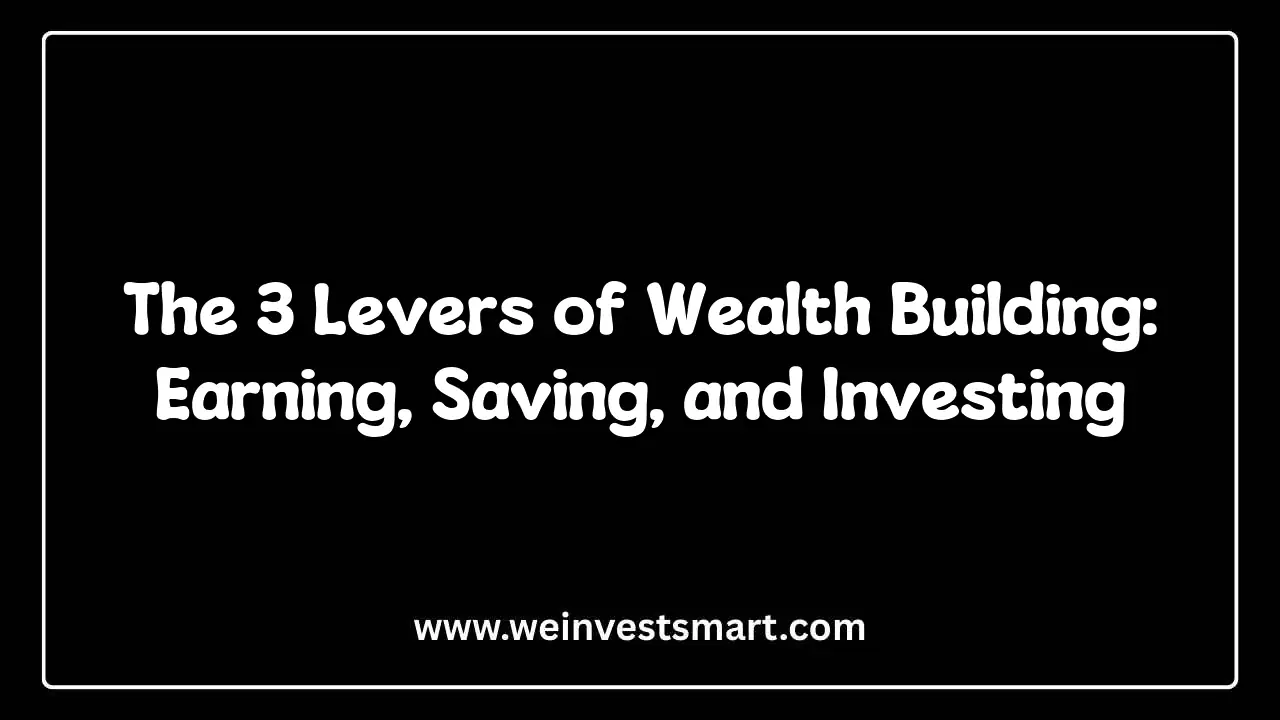· WeInvestSmart Team · wealth-building · 11 min read
Using "Good Debt" to Build Wealth: An Introduction to Leverage
A careful exploration of how debt can be used as a tool, not a trap. Use real estate mortgages and business loans as examples of how to use other people's money to acquire income-producing assets.
From the moment we first learn about money, we are taught one universal, almost religious, truth: debt is bad. It’s a trap, a burden, a sign of financial irresponsibility. We’re told to avoid it at all costs, to cut up our credit cards, and to live a life free from the shackles of owing anyone anything. For millions of people, this is the unquestioned gospel of personal finance. But here’s the uncomfortable truth: this advice, while well-intentioned, is dangerously incomplete. It’s a half-truth that keeps ordinary people from accessing one of the most powerful wealth-building tools ever created.
Going straight to the point, the wealthiest people and most successful corporations in the world didn’t get there by avoiding debt. They got there by mastering it. They understand a principle that most of us were never taught: there is a profound difference between “bad debt” and “good debt.” The problem isn’t debt itself; it’s our lack of understanding of how to use it as a tool rather than letting it become a trap.
But what if we told you that you could use someone else’s money to buy assets that make you rich? What if the strategic use of borrowing was the key to accelerating your wealth journey, allowing you to acquire income-producing assets years or even decades before you could afford them with your own cash? Here’s where things get interesting. This isn’t a loophole or a secret for the elite. It’s a financial concept called leverage. And this is just a very long way of saying that it’s time to unlearn everything you thought you knew about debt.
The Great Divide: Good Debt vs. Bad Debt
Before we can use debt as a tool, we must learn to distinguish between the two types. This is the most critical distinction in all of personal finance, and failing to understand it is why so many people end up in financial trouble.
Bad Debt is the type we’re all familiar with. It’s money borrowed to purchase things that lose value or are consumed immediately. Think of high-interest credit card debt used to buy designer clothes, a personal loan for a lavish vacation, or a high-priced car loan for a vehicle that depreciates the second you drive it off the lot. This kind of debt offers no potential for a financial return. It is a pure liability that drains your income and actively makes you poorer over time. It serves one purpose: instant gratification.
Good Debt, on the other hand, is money borrowed to purchase an asset that is expected to increase in value or generate income. The core principle is that the asset you buy should produce a return that is greater than the cost of borrowing the money (the interest on the loan). This is not debt for consumption; it is debt for investment. It is the strategic use of borrowed capital to acquire something that puts more money in your pocket. You get the gist: bad debt takes money from you, while good debt makes money for you.
You may also be interested in: How to Build Multiple Income Streams: A Guide for Beginners
The Power of Leverage: Using Other People’s Money (OPM)
The concept of using good debt to build wealth is built on the principle of financial leverage. In physics, a lever allows you to amplify a small input force to move a heavy object. In finance, leverage allows you to use a small amount of your own money, combined with a larger amount of borrowed money—often called Other People’s Money (OPM)—to control a much larger asset. This magnifies your potential returns, allowing you to build wealth far faster than you could with your own capital alone.
The funny thing is that most people already use leverage without realizing it when they buy a home with a mortgage. They don’t save up the full $400,000 in cash. They use a 20% down payment ($80,000) and leverage the bank’s money ($320,000) to control the entire asset. But they often stop there, never applying this powerful concept to acquiring assets that actually generate income. The wealthy, however, apply this principle to everything.
Let’s look at two of the most common and powerful examples of using good debt as a wealth-building tool: real estate mortgages and business loans.
You may also be interested in: The Millionaire Next Door: 7 Surprising Habits of Everyday Millionaires
Case Study 1: Real Estate — The Classic Leverage Play
Investing in real estate is a time-tested method for building wealth, primarily because it is one of the easiest ways for an ordinary person to access and utilize leverage. When you buy an income-producing property with a mortgage, you are executing a classic leverage strategy.
Imagine you want to buy a $200,000 rental property.
- Scenario A (No Leverage): You save up for years and buy the property with $200,000 in cash. The property generates $1,200 in monthly rent after all expenses (taxes, insurance, maintenance). This gives you an annual cash flow of $14,400. Your cash-on-cash return is $14,400 / $200,000 = 7.2%. A respectable return.
But what happens when we introduce leverage?
- Scenario B (With Leverage): You use a 20% down payment of your own money ($40,000). You borrow the remaining $160,000 from a bank with a 30-year mortgage at a 6% interest rate. Your monthly mortgage payment (principal and interest) is about $960. Your monthly rent after expenses is still $1,200.
- Now, your monthly cash flow is $1,200 (rent) - $960 (mortgage) = $240.
- Your annual cash flow is $2,880.
- Your cash-on-cash return is $2,880 / $40,000 = 7.2%.
At first glance, it seems the return is the same. But here’s where things get interesting. You’ve forgotten about the other wealth-building components.
- Equity Paydown: Every month, a portion of your $960 mortgage payment goes towards paying down the loan principal. Your tenants are effectively buying the asset for you. In the first year alone, you’ll build over $2,000 in equity from this paydown.
- Appreciation: Real estate typically appreciates over the long term. If the $200,000 property appreciates by just 3% in the first year, that’s a $6,000 gain. This gain is on the entire value of the asset, not just your down payment.
- Amplified Return on Equity: Let’s combine the cash flow ($2,880), equity paydown ($2,000), and appreciation ($6,000). Your total return in the first year is $10,880. But you only invested $40,000 of your own money. Your total return on investment is $10,880 / $40,000 = 27.2%.
This is the power of leverage. You used $40,000 to control a $200,000 asset, and in doing so, you amplified your return from 7.2% to over 27%. And this is just a very long way of saying that you used the bank’s money and the tenant’s money to build your wealth.
You may also be interested in: The Ladder of Personal Finance: A Visual Guide to Building Wealth
Case Study 2: Business Loans — Fueling the Growth Engine
The same principle of leverage applies powerfully in the world of entrepreneurship. A business loan, when used strategically, is not a sign of failure; it is a tool for calculated expansion. A smart business owner uses debt to invest in productive assets or initiatives that are expected to generate more revenue than the cost of the loan.
Imagine you run a successful small bakery that generates $50,000 in annual profit. You have an opportunity to buy a new, more efficient oven for $30,000. This oven will allow you to increase production and take on more catering orders, and you project it will increase your annual profit by $15,000.
Scenario A (No Leverage): You can save up your profits to buy the oven. At your current rate, it might take you a year or more to save the $30,000. During that time, you miss out on the potential $15,000 in extra profit.
Scenario B (With Leverage): You take out a 5-year business loan for $30,000 at an 8% interest rate. Your annual loan payment is approximately $7,300. You buy the oven immediately.
- Your profit increases by $15,000.
- You pay the bank $7,300.
- Your net profit increase is $15,000 - $7,300 = $7,700.
By using the bank’s money, you immediately increased your annual profit by $7,700 and acquired an asset that will continue to generate returns long after the loan is paid off. You didn’t have to drain your own cash reserves, and you captured an opportunity you would have otherwise missed. This is the essence of using good debt to accelerate business growth.
You may also be interested in: The 3 Levers of Wealth Building: Earning, Saving, and Investing
The Double-Edged Sword: Understanding and Managing the Risks
This sounds like a trade-off, and it absolutely is. Leverage is a powerful tool, but it is a double-edged sword. It amplifies gains, but it also amplifies losses. This is the part of the conversation that must be treated with the utmost seriousness. If you borrow money to buy a rental property and the tenant leaves or the market crashes, you are still on the hook for that mortgage payment. If you take out a business loan and the expected profits don’t materialize, you still have to pay the bank.
Responsible use of leverage requires careful risk management:
- Maintain Healthy Cash Reserves: Never use leverage if you don’t have a solid emergency fund. You need a buffer to cover debt payments during unexpected vacancies or business downturns.
- Do Your Due Diligence: Never borrow for an investment you don’t fully understand. Run the numbers conservatively. Stress-test your assumptions. What happens if rent is lower than expected? What if expenses are higher?
- Don’t Overleverage: Just because a bank will lend you a certain amount doesn’t mean you should take it all. Maintaining a lower loan-to-value (LTV) ratio provides a bigger safety cushion if asset values fall.
You may also be interested in: Net Worth vs. Income: Why Your Balance Sheet is More Important Than Your Paycheck
The Bottom Line: Debt is a Tool, Not a Moral Failing
For generations, we’ve been taught to fear debt, to see it as a sign of weakness. But this black-and-white thinking is a disservice to anyone serious about building wealth. The financially savvy don’t ask, “Is debt good or bad?” They ask, “What will this debt be used for?”
The ability to confidently borrow money to acquire an asset that generates more than it costs is a skill. It requires education, discipline, and a willingness to challenge conventional wisdom. It means shifting your mindset from that of a consumer to that of an investor.
And this is just a very long way of saying that it’s time to stop thinking of debt as a four-letter word. In the right hands, and for the right purpose, it can be the most powerful word in your wealth-building vocabulary. You get the gist: learn to distinguish the tool from the trap, manage the risk, and you can start building a financial future that would be impossible with your own money alone.
This article is for educational purposes only and should not be considered personalized financial advice. Consider consulting with a financial advisor for guidance specific to your situation.
Using “Good Debt” to Build Wealth FAQ
What is the difference between good debt and bad debt?
Good debt is used to purchase an asset that is expected to increase in value or generate income, such as a mortgage for a rental property or a loan to start a business. Bad debt is used for depreciating assets or consumption, like high-interest credit card debt for luxury goods, which depletes wealth.
What is financial leverage?
Financial leverage is the strategy of using borrowed money—often called “Other People’s Money” (OPM)—to invest in an asset. The goal is for the asset to generate returns (through income or appreciation) that are higher than the cost of the debt (the interest rate). This amplifies potential profits, but also amplifies potential losses.
How can a real estate mortgage be considered “good debt”?
A mortgage on an investment property is good debt because it allows you to control a large, income-producing asset with a relatively small down payment. The rental income can cover the mortgage and expenses, while the property potentially appreciates in value, building your equity and wealth over time.
What are the risks of using leverage?
The primary risk of leverage is that it magnifies losses just as it magnifies gains. If the investment’s value falls or its income stream dries up, you are still responsible for the debt payments. This can lead to significant financial distress, loss of the asset, and damage to your credit.
How do business loans help build wealth?
Business loans can be a powerful form of good debt when used to fund productive activities that generate returns greater than the loan’s cost. This includes investing in new equipment, expanding operations, or acquiring a competitor—actions that can significantly increase a company’s revenue and profitability.



